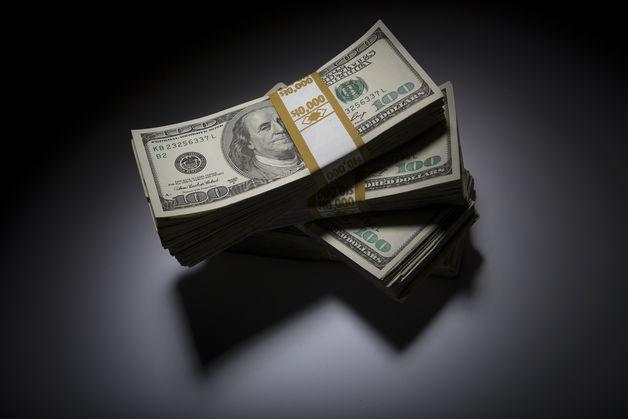Dollar slips after weak U.S. data hints at dovish Fed
Bareksa • 26 Jun 2014

Stacks of U.S. $100 bills are arranged for a photograph in New York (Bloomberg/Scott Eells)
The euro was last up 0.18 percent against the dollar to trade at $1.3630.
Bareksa.com - The U.S. dollar slid to a one-month low against a basket of major currencies on Wednesday after weak U.S. gross domestic product and durable goods orders data signalled the likelihood of a continued dovish stance from the Federal Reserve.
The Commerce Department said U.S. gross domestic product fell at a 2.9 percent annual rate in the first quarter, instead of the 1.0 percent pace it had reported last month, to record its worst performance in five years.
In a second report, the department said orders for long-lasting U.S. manufactured goods fell 1.0 percent last month, marking the first decline in three months. Economists polled by Reuters had forecast orders being flat.
"The data underpinned the cautious stance that the Fed signalled at the June policy meeting," said Vassili Serebriakov, currency strategist at BNP Paribas in New York.
On June 18, the Fed expressed confidence the U.S. economic recovery was on track and hinted at a slightly more aggressive pace of rate increases starting next year. The central bank lowered projections for the long-run target interest rate, however. Traders are watching data closely for signs of when the U.S. central bank will raise interest rates.
The U.S. dollar index, which measures the dollar against a basket of six major currencies, was last down 0.14 percent at 80.216. The index earlier hit 80.091, its lowest in over a month.
The euro was last up 0.18 percent against the dollar to trade at $1.3630. The currency hit a more than two-week high against the dollar of $1.36515 earlier in the session.
The dollar was last down 0.13 percent against the yen at 101.84 yen after having fallen to a near two-week low of 101.62. The dollar was last down 0.12 percent against the Swiss franc to trade at 0.8927 franc.
Analysts said the yen, which is viewed as a safe-haven currency, rose partly on geopolitical tensions stemming from a Sunni insurgent onslaught in Iraq.
The British pound erased slight gains against the dollar following the weak U.S. data and was last down 0.06 percent at $1.69745.
Analysts said the weakness was a continuation of Tuesday's losses, when the currency fell after Bank of England Governor Mark Carney pushed back slightly against expectations that the bank could raise interest rates before the end of the year.
"It goes back to: don't fight the central bank," said Ihab Salib, head of international fixed income at Federated Investors in Pittsburgh, who is also responsible for currency management at the firm.
Lower U.S. interest rates also weighed on the dollar. The benchmark 10-year U.S. Treasury note was last up 6/32 in price to yield 2.56 percent. (Source : Reuters)